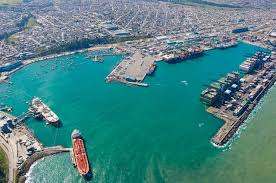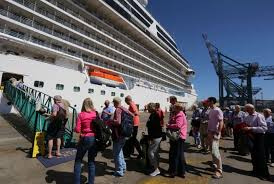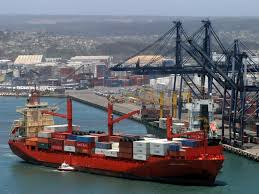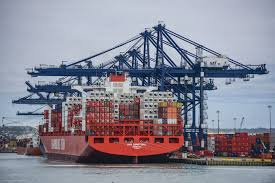How deep is the harbor at the Port of San Antonio?

How deep is the harbor at the Port of San Antonio?
How deep is the harbor at the Port of San Antonio? The Port of San Antonio is known for its significant depth, which plays a vital role in accommodating large vessels that traverse international waters.
Understanding the depth of this harbor provides insight into its operational capabilities and how it compares to other ports in the region.
Importance of Harbor Depth
The depth of a harbor is crucial for determining which types of vessels can safely navigate and dock.
Deeper harbors can accommodate larger ships, including container ships and bulk carriers, which are essential for global trade.
The Port of San Antonio is strategically designed to cater to the needs of modern shipping operations.

Depth Specifications of San Antonio Harbor
The harbor at the Port of San Antonio reaches impressive depths, typically ranging from 12 to 14 meters.
This depth allows the port to handle a variety of cargo ships efficiently, contributing to its status as a key maritime hub.
Such depth ensures that the port can accommodate both large container ships and bulk carriers without concerns about grounding.
Comparing Depth with Other Ports
When comparing the depth of the Port of San Antonio to other ports in Chile, it stands out for its capacity.
For instance, Valparaíso, another major port, has a shallower harbor depth, which can limit the size of vessels it can handle.
This difference in depth significantly impacts cargo operations and logistics for shipping companies.
Impact on Cargo Operations
The significant depth of the San Antonio harbor directly influences the volume of cargo it can handle efficiently.
Larger ships mean increased cargo capacity, leading to more streamlined logistics and reduced shipping costs for companies.
As a result, the port attracts a wide range of shipping lines looking to maximize efficiency in their operations.
Accommodating Modern Shipping Trends
The maritime industry has seen a trend toward larger vessels as shipping companies seek to maximize efficiency and reduce costs.
The deep harbor of San Antonio positions it well to adapt to these trends, ensuring it remains competitive in the global shipping landscape.
This capability is essential for attracting major shipping lines and increasing trade volume.
Dredging and Maintenance
To maintain the optimal depth of the harbor, regular dredging is essential.
Dredging ensures that sediment buildup does not affect the harbor’s navigability, allowing ships to access the port without issues.
The port authority is proactive in scheduling dredging activities to maintain the depth necessary for efficient operations.
Safety Considerations
A deeper harbor also contributes to safety during inclement weather conditions.
Ships docking in deeper waters have more room to maneuver, reducing the risk of collisions and grounding.
This aspect of harbor depth enhances overall safety for shipping operations, making San Antonio an attractive destination for shipping companies.
Infrastructure and Equipment
The Port of San Antonio is equipped with advanced infrastructure and equipment designed to facilitate the safe docking of vessels.
This includes specialized cranes and loading facilities that accommodate large ships, maximizing the port’s operational efficiency.
The combination of depth and infrastructure creates an ideal environment for modern shipping.
Future Prospects for the Port
As global trade continues to evolve, the Port of San Antonio is likely to focus on maintaining and potentially increasing its harbor depth.
Future projects may involve enhancements to accommodate even larger vessels, aligning with industry trends.
This forward-thinking approach ensures that the port remains a vital player in international trade.
A Key Maritime Gateway
The depth of the harbor at the Port of San Antonio plays a pivotal role in its operational capabilities.
With depths ranging from 12 to 14 meters, the port is well-equipped to handle large vessels and a diverse range of cargo.
This advantage positions the Port of San Antonio as a critical gateway for trade in Chile and beyond, ensuring its relevance in a competitive maritime landscape.





Leave a Reply